Sensor Sweep: Marvel Conan, Movie Poster Art, Guns in Horror Movies
Monday , 16, May 2022 Sensor Sweep 1 CommentComic Books (Bleeding Cool): It was a note to a fan page on Facebook that did it, with a well-connected fan pointing to an upcoming Conan cover by Esad Ribic as his last, as Marvel no longer own the rights to the character. So, at Lake Como Comic Art Festival, I did a little digging.
did it, with a well-connected fan pointing to an upcoming Conan cover by Esad Ribic as his last, as Marvel no longer own the rights to the character. So, at Lake Como Comic Art Festival, I did a little digging.
Comic Books (Dark Worlds Quarterly): Tales of 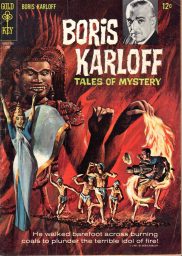 heroic fantasy can be found in the pages of Boris Karloff Tales of Mystery from Gold Key comics. “Mystery” was Silver Age code for “Horror”. The comic began in 1963 (the year the TV show ended!) and ran until February 1980, though issues were all reprints after December 1977. You won’t find any Conans running around in them. Gold Key had its own Sword & Sorcery comic if you wanted that: Tales of Sword & Sorcery Dagar the Invincible.
heroic fantasy can be found in the pages of Boris Karloff Tales of Mystery from Gold Key comics. “Mystery” was Silver Age code for “Horror”. The comic began in 1963 (the year the TV show ended!) and ran until February 1980, though issues were all reprints after December 1977. You won’t find any Conans running around in them. Gold Key had its own Sword & Sorcery comic if you wanted that: Tales of Sword & Sorcery Dagar the Invincible.
Fiction (Ken Lizzi): I finally got my hands on a copy of the anthology Heroic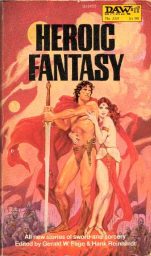 Fantasy. That’s a good cover, isn’t it? There’s a story in that illustration that I’d like to read someday. The introduction was…adequate. After reading so many Sword-and-Sorcery anthologies I’ve discovered the intros tend to cover the same ground. This one adds little or nothing to the field. But, how are the stories? Let’s answer that question.
Fantasy. That’s a good cover, isn’t it? There’s a story in that illustration that I’d like to read someday. The introduction was…adequate. After reading so many Sword-and-Sorcery anthologies I’ve discovered the intros tend to cover the same ground. This one adds little or nothing to the field. But, how are the stories? Let’s answer that question.
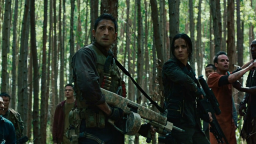 Cinema (Tactical Life): We’ve actually covered 13 of the coolest guns from horror movies before, and don’t be surprised if at least one of those movies ends up on our list of the best horror movies for gun nuts. But before we get into it, what makes a movie a “horror” movie? It’s such a broad genre with many other sub-genres in it, such as zombie movies, monster movies, vampire movies, etc. For our purposes, we’re just going to go with “any movie that’s supposed to scare you at some point” as a definition.
Cinema (Tactical Life): We’ve actually covered 13 of the coolest guns from horror movies before, and don’t be surprised if at least one of those movies ends up on our list of the best horror movies for gun nuts. But before we get into it, what makes a movie a “horror” movie? It’s such a broad genre with many other sub-genres in it, such as zombie movies, monster movies, vampire movies, etc. For our purposes, we’re just going to go with “any movie that’s supposed to scare you at some point” as a definition.
The 5 Best Horror Movies for Gun Nuts
Conan (Sprague de Camp Fan): “The Scarlet Citadel” first appeared in Weird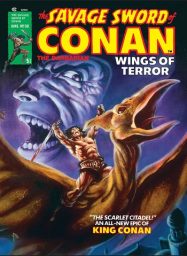 Tales, January, 1933. It was reprinted in Skull-Face and Others, Arkham House, 1946 and in King Conan, Gnome Press, 1953. It is the fourth and last story in Conan the Usurper, Lancer Books, 1967.
Tales, January, 1933. It was reprinted in Skull-Face and Others, Arkham House, 1946 and in King Conan, Gnome Press, 1953. It is the fourth and last story in Conan the Usurper, Lancer Books, 1967.
Science Fiction (Walker’s Retreat): I’d mentioned Anton Petrov some time ago. He’s a space science guy whose channel is fantastic viewing for all things interstellar. He’s not a fiction guy, but I think that space gamers and writers ought to throw him on their regular reading and viewing list because what he does videos about could be very good for making space fiction–gaming or writing–a lot more fun in the same way that knowing real history made Howard’s Conan stories a lot more fun.
Gaming (Grognardia): Issue #36 of White Dwarf (December 1982) features a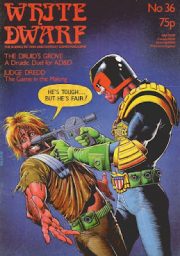 cover by Brian Bolland, one of the comics artists most closely associated with Judge Dredd. At the time this issue appeared, I was only dimly aware of the existence of Dredd as a character. What little I did know was gleaned from the pages of White Dwarf, as I’ll soon discuss.
cover by Brian Bolland, one of the comics artists most closely associated with Judge Dredd. At the time this issue appeared, I was only dimly aware of the existence of Dredd as a character. What little I did know was gleaned from the pages of White Dwarf, as I’ll soon discuss.
 Gaming (Wasteland & Sky): Back in the day, video games were centered on just about anything. Simply look at the concepts of things like Q-Bert, Bubble Bobble, and Super Mario Bros., to see just how wild things could get. The way designers came up with so many different ways and systems to earn score and top the scoreboards was something else, much more than today.
Gaming (Wasteland & Sky): Back in the day, video games were centered on just about anything. Simply look at the concepts of things like Q-Bert, Bubble Bobble, and Super Mario Bros., to see just how wild things could get. The way designers came up with so many different ways and systems to earn score and top the scoreboards was something else, much more than today.
Science Fiction (With Both Hands): Last Contact is where everything in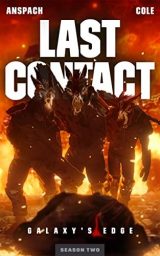 Season Two of Galaxy’s Edge comes together. There is something here for just about every flavor of fan I’ve seen so far, and you can see the pieces being setup for a real banger in the next book. In Remains, we got almost full on military scifi with the invasion of Kima, a lovingly crafted homage to military tactics.
Season Two of Galaxy’s Edge comes together. There is something here for just about every flavor of fan I’ve seen so far, and you can see the pieces being setup for a real banger in the next book. In Remains, we got almost full on military scifi with the invasion of Kima, a lovingly crafted homage to military tactics.
 Art (Goodman Games): Prolific writer of science fiction and fantasy series, Fred Saberhagen is best known for his Berserker series of far-future space operas in which a beleaguered mankind squares off against a malign machine intelligence, and the Swords series, detailing a massive conflict involving numerous key players and their unique swords of power.
Art (Goodman Games): Prolific writer of science fiction and fantasy series, Fred Saberhagen is best known for his Berserker series of far-future space operas in which a beleaguered mankind squares off against a malign machine intelligence, and the Swords series, detailing a massive conflict involving numerous key players and their unique swords of power.
Writing (DMR Books): Appearing in the February, 1887 issue of The Contemporary Review, “On Fiction” was the result of some vigorous urging from HRH’s literary friends. Howells had not only insulted exotic adventure in general and She specifically, he had also taken aim at England and Englishmen. Who better to answer such various insults than the young lion who had arisen in such might with the publication of King Solomon’s Mines in 1885?
Fiction (Interesting Literature): ‘The Fog Horn’ is a 1951 short story by Ray Bradbury (1920-2012), republished in 1953 as the opening story in his collection The Golden Apples of the Sun. The story, which is about a lighthouse whose foghorn emits a noise which attracts the attention of a primeval dinosaur living miles below the ocean, contains a number of key themes of Bradbury’s work, especially in its depiction of technology and the need for connection and companionship.
Horror (Old Style Tales): To the majority of his readership – especially those in the United Kingdom – M. R. James will forever be inextricably linked to the Christmas holiday season, although it was originally a gossamer connection. The association was slow in coming from the outset: in 1893 James’ read his very first ghost story, “Canon Alberic’s Scrap-book,” to a fireside gathering of his Cambridge social club – the Chitchat Society.
Review (Old Style Tales): To begin with, from the very first moment that I read Woodbridge’s fiction, I was struck by how rare and delicious it is to find a contemporary horror writer with such sharp wit and colorful realism tempered by old-school restraint — especially an up-and-comer who might be tempted to overplay his hand.
RPG (R’lyeh Reviews): Hostile is a gritty, near future roleplaying game inspired by the Blue-Collar Science Fiction of films such as Alien, Bladerunner, and Outland. It is a future in which space exploration and colonisation is difficult, harsh, and dangerous, but in which there are asteroid systems and worlds to be exploited and great profits to be made. Conflict is not unknown—between colonies, between colonies and corporations, between corporations, and when that gets too much the Interstellar Commerce Organisation steps in or peacekeepers such as the United States Marine Corps are sent in.
inspired by the Blue-Collar Science Fiction of films such as Alien, Bladerunner, and Outland. It is a future in which space exploration and colonisation is difficult, harsh, and dangerous, but in which there are asteroid systems and worlds to be exploited and great profits to be made. Conflict is not unknown—between colonies, between colonies and corporations, between corporations, and when that gets too much the Interstellar Commerce Organisation steps in or peacekeepers such as the United States Marine Corps are sent in.
Unexplained (Tellers of Weird Tales): Ninety years ago today, on May 5, 1932, the last of Charles H. Fort‘s four books was published. Entitled Wild Talents, it arrived in bookstores too late for the author to have seen it there himself, for Fort had died two days before in a New York hospital. He was just fifty-seven years old. In writing Wild Talents, Fort concerned himself with psychic powers, among other strange, unexplained, and anomalous phenomena.
Science Fiction (M Porcius): In 1953, Pellegrini & Cudahy published Worlds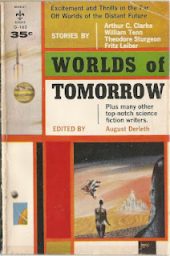 of Tomorrow, a hardcover anthology of nineteen stories edited by August Derleth; recently, at Wonder Book in Hagerstown, MD, a place I strongly recommend to all fans of 20th-century SF, I purchased the 1958 Berkley Books abridged paperback edition of the volume.
of Tomorrow, a hardcover anthology of nineteen stories edited by August Derleth; recently, at Wonder Book in Hagerstown, MD, a place I strongly recommend to all fans of 20th-century SF, I purchased the 1958 Berkley Books abridged paperback edition of the volume.
Cinema (Talking Pulp): I’m pretty disappointed in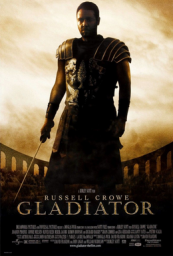 myself for having not seen this movie in twenty years. I saw it in the theater, when it came out, and I also saw it on DVD when that was first released. While I’ve seen segments of it, over the years, it’s been two decades since I’ve watched the film in its entirety. Granted, I can’t believe that this movie is now that old. In my mind, it still feels fairly recent but we’ve already passed the 20th anniversaries for the Harry Potter movies and Peter Jackson’s Lord of the Rings trilogy.
myself for having not seen this movie in twenty years. I saw it in the theater, when it came out, and I also saw it on DVD when that was first released. While I’ve seen segments of it, over the years, it’s been two decades since I’ve watched the film in its entirety. Granted, I can’t believe that this movie is now that old. In my mind, it still feels fairly recent but we’ve already passed the 20th anniversaries for the Harry Potter movies and Peter Jackson’s Lord of the Rings trilogy.
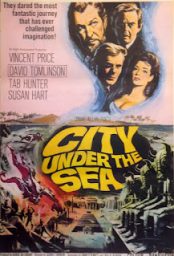 Cinema (Wyrd Britain): Known in the US as ‘War-Gods of the Deep’, ‘City Under the Sea’ is a Vincent Price helmed movie from American International Pictures home of Price’s Phibes movies as well as Roger Corman’s Edgar Allan Poe movies to which this owes much of it’s genesis, parts of it’s title and flashes of it’s script including that opening quote above which paraphrases Poe’s poem, ‘The City in the Sea’ and was one of a number of movies produced by the studio that was lumbered with a Poe related title – see also ‘The Conqueror Worm’ the entirely irrelevant US title of ‘The Witchfinder General’.
Cinema (Wyrd Britain): Known in the US as ‘War-Gods of the Deep’, ‘City Under the Sea’ is a Vincent Price helmed movie from American International Pictures home of Price’s Phibes movies as well as Roger Corman’s Edgar Allan Poe movies to which this owes much of it’s genesis, parts of it’s title and flashes of it’s script including that opening quote above which paraphrases Poe’s poem, ‘The City in the Sea’ and was one of a number of movies produced by the studio that was lumbered with a Poe related title – see also ‘The Conqueror Worm’ the entirely irrelevant US title of ‘The Witchfinder General’.
RPG (Pits Perilous): Character alignments are surprisingly controversial in some corners of the hobby, although hardly a universal complaint. I’ve come to the conclusion that they’re pretty much essential for a certain kind of fantasy to operate, and for reasons obvious and sometimes obscure:
Fantasy (Steve Carroll Writes): Prolific British author Kenneth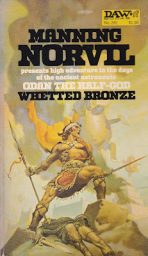 Bulmer wrote over 160 novels and numerous short stories (mostly within the science fiction genre), both under his own name and a variety of pseudonyms. He may be best known for the Dray Prescott series of sword and planet books published as Alan Burt Akers. I didn’t know when I started this book that it is actually the second in a three-book series detailing the adventures of Odan, a Conan-like demigod in a revisionist version of Bronze-age Mesopotamia.
Bulmer wrote over 160 novels and numerous short stories (mostly within the science fiction genre), both under his own name and a variety of pseudonyms. He may be best known for the Dray Prescott series of sword and planet books published as Alan Burt Akers. I didn’t know when I started this book that it is actually the second in a three-book series detailing the adventures of Odan, a Conan-like demigod in a revisionist version of Bronze-age Mesopotamia.
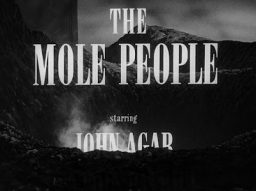 Cinema (Andrew Darlington): There’s an entire sub-genre of Science Fiction dealing with subterranean adventure, which extends all the way from Jules Verne’s ‘Journey To The Centre Of The Earth’ (1846), through Edgar Rice Burroughs’ fantastic exploits set in the vast Hollow Earth interior-realm of ‘Pellucidar’ and John Wyndham’s ‘The Secret People’ (1935) trapped in a system of caverns beneath the Sahara, into – in movie terms at least, the plunge into the caving splatter-shocker ‘The Descent’ (2005).
Cinema (Andrew Darlington): There’s an entire sub-genre of Science Fiction dealing with subterranean adventure, which extends all the way from Jules Verne’s ‘Journey To The Centre Of The Earth’ (1846), through Edgar Rice Burroughs’ fantastic exploits set in the vast Hollow Earth interior-realm of ‘Pellucidar’ and John Wyndham’s ‘The Secret People’ (1935) trapped in a system of caverns beneath the Sahara, into – in movie terms at least, the plunge into the caving splatter-shocker ‘The Descent’ (2005).
Writing (DMR Books): May 11 marked the anniversary of the death of one William Dean Howells (1837-1920). Good riddance. Regarded by some as “the major American novelist and critic of his age” and as the “Dean of American Letters” and the “Father of Modern Realism”, Howells’ championing of Literary Realism while editor of The Atlantic Monthly slashed a gaping wound in American literature that has yet to heal.
Art (Intelligent Collector): Robert Peak is so often cited as “The Father of the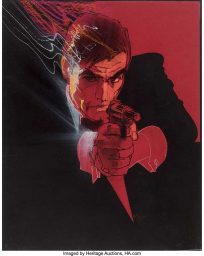 Modern Movie Poster” that when you Google the latter, you inevitably get the former. The ad man and maker of Time magazine covers painted more than 130 film posters in the 1960s, ’70s and ’80s, and was feted time and again “for injecting vitality and vibrant colors” into those works, as The New York Times noted upon his untimely death in 1992.
Modern Movie Poster” that when you Google the latter, you inevitably get the former. The ad man and maker of Time magazine covers painted more than 130 film posters in the 1960s, ’70s and ’80s, and was feted time and again “for injecting vitality and vibrant colors” into those works, as The New York Times noted upon his untimely death in 1992.
Warfare (Future War Stories): Before we embark on this broad and  complex subject, I think we need to discuss what is and what is not military camouflage. The word itself, “camouflage” originates from French and it became used in a military terminology context during the First World War. Before this, there was the Imperial British Khaki uniforms of the Victorian Period that started the camouflage incorporation movement that moved military uniforms away for Napoleonic boldly colored uniforms to the battle dress we know today.
complex subject, I think we need to discuss what is and what is not military camouflage. The word itself, “camouflage” originates from French and it became used in a military terminology context during the First World War. Before this, there was the Imperial British Khaki uniforms of the Victorian Period that started the camouflage incorporation movement that moved military uniforms away for Napoleonic boldly colored uniforms to the battle dress we know today.
Fiction (Dark City Underground): Jim Kjelgaard (pronounced kel-guard) is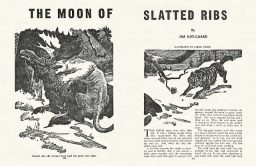 best remembered for his young adult adventures featuring dogs, young boys, and always set in the outdoors. A few of his best-known books are Big Red (1945), Irish Red (1951), Outlaw Red (1953), and Stormy (1959). But Kjelgaard was also a regular contributor to pulp and slick magazines in the 1940s and 1950s, including Black Mask, Argosy, Western Story, Weird Tales – one of Kjelgaard’s stories in Weird Tales, “The Man Who Told the Truth” (July 1946) was ghost-written by Robert Bloch – Short Stories, Collier’s, Saturday Evening Post and many others.
best remembered for his young adult adventures featuring dogs, young boys, and always set in the outdoors. A few of his best-known books are Big Red (1945), Irish Red (1951), Outlaw Red (1953), and Stormy (1959). But Kjelgaard was also a regular contributor to pulp and slick magazines in the 1940s and 1950s, including Black Mask, Argosy, Western Story, Weird Tales – one of Kjelgaard’s stories in Weird Tales, “The Man Who Told the Truth” (July 1946) was ghost-written by Robert Bloch – Short Stories, Collier’s, Saturday Evening Post and many others.
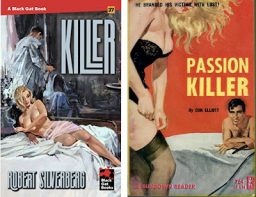 Review (Paperback Warrior): Before he was science-fiction royalty, Robert Silverberg was a cranking out cheap genre paperbacks to make ends meet. His output included sleaze novels like 1965’s Passion Killer — originally released under the pseudonym of Don Elliott when the author was 29. After discovering that the book is actually a tidy bit of crime noir fiction, Stark House Press imprint Black Gat books has re-released the paperback under the name Killer.
Review (Paperback Warrior): Before he was science-fiction royalty, Robert Silverberg was a cranking out cheap genre paperbacks to make ends meet. His output included sleaze novels like 1965’s Passion Killer — originally released under the pseudonym of Don Elliott when the author was 29. After discovering that the book is actually a tidy bit of crime noir fiction, Stark House Press imprint Black Gat books has re-released the paperback under the name Killer.
Fiction (Pulp Fiction Reviews): THE MENACE By Mickey Spillane & Max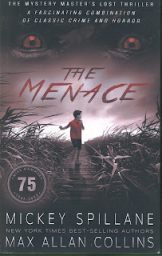 Allan Collins. This book is a gem in that it actually contains three different works by the indisputable master of private-eye fiction, Mickey Spillane. The first is a novella based on a television script and adapted by Collins. The second is a long lost short story and the last a non-fiction true crime essay based on an actual murder case.
Allan Collins. This book is a gem in that it actually contains three different works by the indisputable master of private-eye fiction, Mickey Spillane. The first is a novella based on a television script and adapted by Collins. The second is a long lost short story and the last a non-fiction true crime essay based on an actual murder case.
 Fiction (Pulp Super Fan): And with this posting, I finish my re-reading of August Derleth‘s Solar Pons stories with the eighth and final volume from Belanger Books, The Apocrypha of Solar Pons. Though with The Apocrypha, these works are a first-time read for me. This volume collects works that previously were in three volumes: A Praed Street Dossier (1968), The Unpublished Solar Pons (1994), and The Final Adventures of Solar Pons (1998).
Fiction (Pulp Super Fan): And with this posting, I finish my re-reading of August Derleth‘s Solar Pons stories with the eighth and final volume from Belanger Books, The Apocrypha of Solar Pons. Though with The Apocrypha, these works are a first-time read for me. This volume collects works that previously were in three volumes: A Praed Street Dossier (1968), The Unpublished Solar Pons (1994), and The Final Adventures of Solar Pons (1998).
Firearms (Frontier Partisans): Lady Marilyn and I finally watched the Season 6 finale of Outlander Sunday night. What can I say? It’s been BUSY ’round here! The season ended with a bang — multiple bangs, actually — as our heroes were caught in a firefight defending hearth and home from a quasi-legal potential lynch mob out to punish Claire for a purported murder.
That’s one hell of a Sweep!